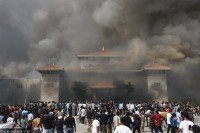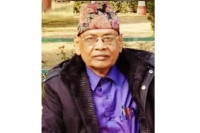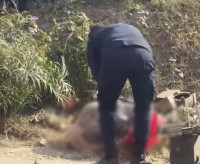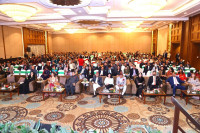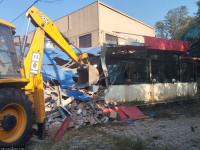Valley
Authorities’ apathy imperils ancient Sohrakhutte Paati
Wooden pillars and remains of the 211-year-old Sohrakhutte paati, which was demolished as part of a road expansion drive in 2015, are all missing, but none of the authorities concerned are working towards finding and preserving the artifacts.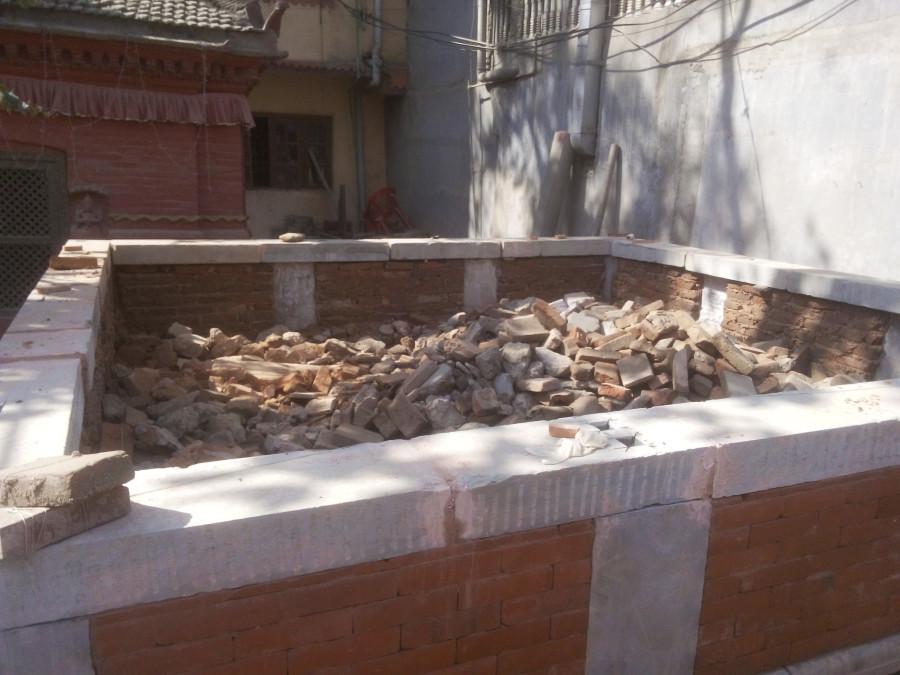
Anup Ojha
Wooden pillars and remains of the 211-year-old Sohrakhutte paati, which was demolished as part of a road expansion drive in 2015, are all missing, but none of the authorities concerned are working towards finding and preserving the artifacts.
The historic paati, which had 16 wooden pillars, was demolished by the Department of Roads while widening the Lainchaur-Balaju road section. After receiving widespread criticism from locals and heritage conservationists, the department had agreed to relocate the paati within the premises of Nepal Baristha Nagarik Samage, which is 50 metres southeast away from the paati’s original location.
Authorities concerned such as the Department of Archaeology, the Department of Roads and the Kathmandu Metropolitan City say they have no information regarding the missing 16 wooden pillars and remains. The road department had demolished the paati, without taking permission from the archaeology department, despite protests of locals and conservation activists.
“This is an extreme example of how our valuable heritages are being destroyed,” said Sudarshan Raj Tiwari, an architect and former dean of the Institute of Engineering. “As Sohrakhutte paati holds a historical significance, it should not have been demolished. The authorities concerned should have preserved the wooden pillars, this is a great misfortune for us,” said Tiwari.
The paati was historically a meeting point for traders who used the trans-Himalayan Kathmandu-Newakot-Kerung trading route which would lead to Tibet. The place was also the main entry point for people coming in from Nuwakot, Dhading, and other areas from the east.
Bishnu Raj Karki, former director at the Department of Archaelogy, shares Tiwari’s sentiments. “This is a great loss,” said Karki. “Nobody is concerned about preserving those woods and remains right now, but if such historic remains are destroyed like this then we all have to face an identity crisis in the long run.”
When the Post contacted officials at the Department of Archaeology, they said the department was not aware of the woods nor of the remains. “The Department of Roads had demolished the paati without taking permission from us. Later when we went to inspect the site, the woods were not there,” said Sobha Maharjan, engineer at the archaeology department. The officials at the Road Department also say they do not know the whereabouts of the remains. “When we demolished the paati, we had left the remains there under the surveillance of locals. We don’t know where they are now,” said Kailash Kumar Shrestha, division chief of Kathmandu Division of Road under DoR.
Krishna Dhakal, a resident at Sohrakhutte and a part of the Samage, believes the woods have been stolen. “Had the authority given the security, we could have preserved it, but those woods were left on the roadside. And then it was stolen,” said Dhakal.
After locals and cultural activists pressed for a relocation of the paati, the DoR started a relocation task in 2017 allocating Rs3.1 million. But the work was in limbo for over a year. The contractor, Ananda Adhikari, was at large after setting the foundation for the Sohrakhutte paati in the new location. Last year, locals, with the help of Ward-16 Chairperson Mukunda Rijal, brought back the contractor. He has now started the relocation task, erecting a five-foot wall of bricks and stones, after consulting with the Department of Archaeology.
“We are also unaware of the wooden pillars of the paati. I am coordinating with locals for a search team. But we are not going to speak right now because this will again hinder the reconstruction work,” said Rijal. “Once the relocation task is completed we will go to the Archeology Department and the Road department,” said Rijal. He said the ongoing relocation task will be completed within three months. The task is being carried out under the surveillance of the Department of Archaeology.




 8.12°C Kathmandu
8.12°C Kathmandu.jpg)
